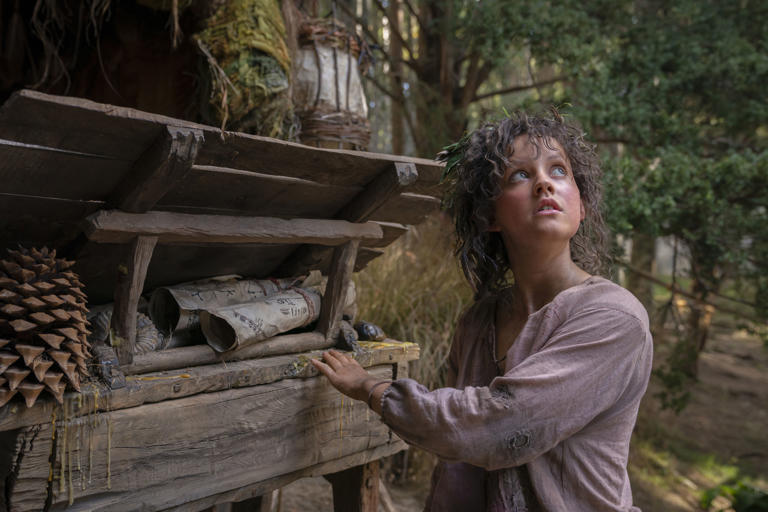
© Ben Rothstein/Prime Video
Making a “Lord of the Rings” series has a unique and somewhat irritating technological challenge: sometimes huge and tiny people must simultaneously appear in the same scene. Consider the following sequences from the second episode of Prime Video’s “The Rings of Power.” Elanor “Nori” Brandyfoot (Markella Kavenaugh) meets a mysterious gentleman who looms above her (Daniel Weyman). Nori is roughly four feet tall and descends from a Hobbit progenitor race known as the Harfoots. This unknown figure who fell from the sky—who may be a Maiar, or a Wizard—is presumably around seven years old.
“The concept of scale disparity is one that most film teams haven’t encountered much in previous projects,” executive producer Lindsey Weber explained. “It’s also one that Tolkien possesses. It is a feature of the property. As a result, we realised we had to get it right.” It might be a headache or a “delightful task” depending on how you look at it. “It can be lengthy and frustrating at times to make it all work,” Weber said, “but ideally, the result and magic trick feels very worth it and extremely Tolkienian.”
So, how did they pull it off? According to the producers, they tried almost every trick in the book, from using extremely tall and very short stand-ins to working with a technodolly camera crane that was programmed to spin around the actors with mathematical precision while they looked at a tennis ball against a green screen. “The idea was always to keep it fresh and never become too reliant on any one technique at any moment,” showrunner JD Payne noted. That could necessitate intricate CGI, or it could imply employing enormous props for diminutive characters like Harfoots and dwarves, or having hand doubles.
According to co-showrunner Patrick McKay, the scene with Nori and the stranger was a “very complex” sequence to shoot, requiring a “smorgasbord” of different methods. The towering figure plummets from the sky and settles in a steaming crater, where he speaks in a scary manner. For one thing, the production erected two different-sized craters in an Auckland, New Zealand hangar — one that made Kavenaugh look tiny, and another that fit Weyman.
“These sequences necessitate an infinite number of sessions to meticulously organise everything,” Weber explained. “By the time everything happens and you arrive on set, it’s like a beautifully choreographed dance.” (Before COVID, the crater was known as “the corona.”) They ultimately opted to rename it something else.) However, it can sometimes be as easy as a double rolling down a slope, only to be replaced by the actor at the end. “It’s old school Lumière camera trickery,” McKay added, referring to the Lumière brothers, movie pioneers. “However, there were four distinct actors between Nori and the stranger in that scene.”
Sure, it all has to be patched together in post-production, but it doesn’t make the experience on set any less extraordinary. “I was on another set for a different shoot, dealing with a different set of issues.” “By the end of the day, there’s fire and smoke and wind machines, and Markella Kavenaugh is screaming, and there’s a seven-and-a-half foot tall actor hanging over her from one perspective,” McKay added. “I remember standing there thinking, ‘Pinch me, I’m in Middle Earth,’ but also, ‘Oh my God, are we filming the coolest show on the earth right now?'” I’m hoping so.”
“The Lord of the Rings: The Rings of Power” is streaming now on Prime Video.